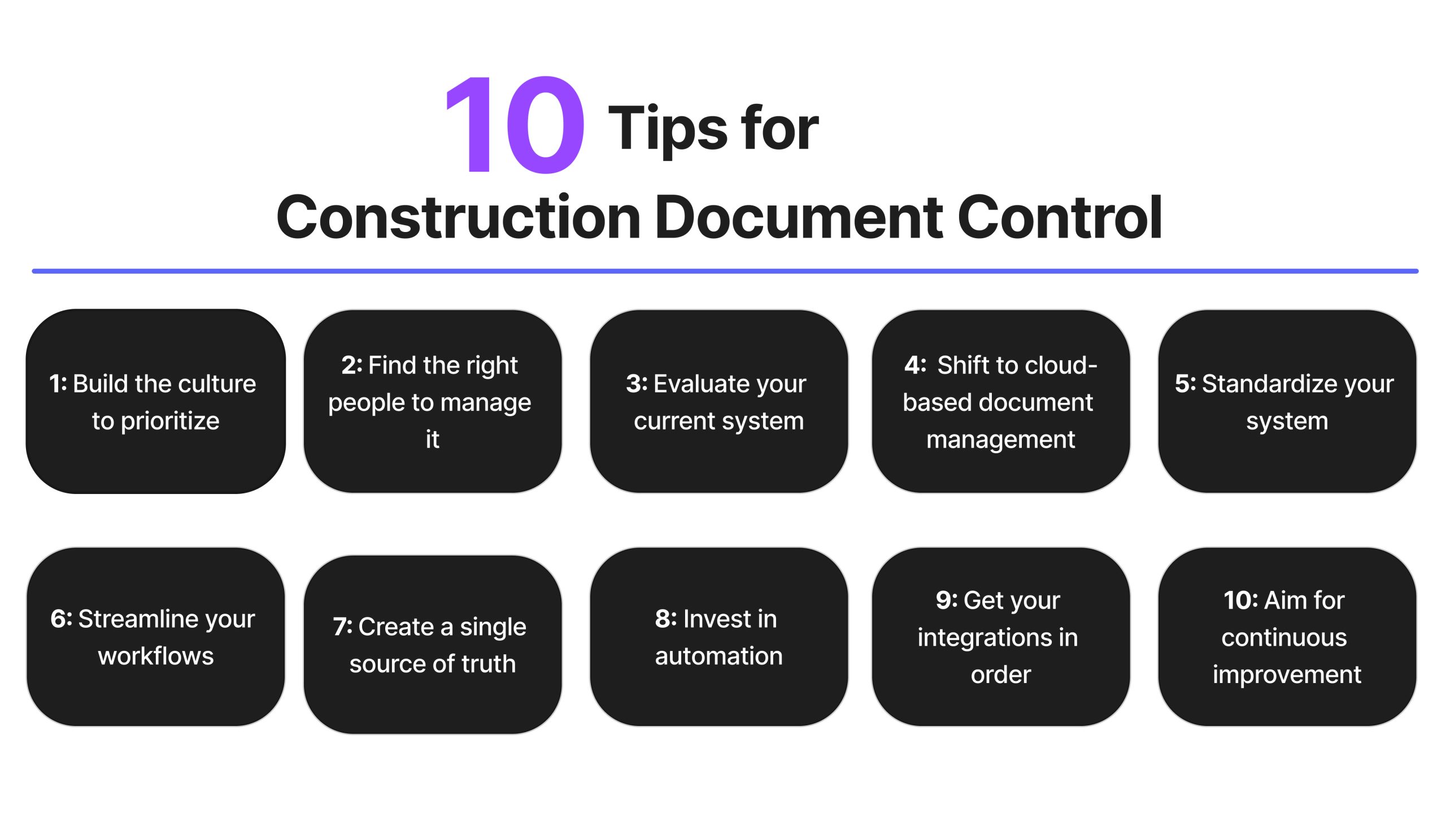Building Better Projects: The Duty of Construction Document Management in Success
Building Better Projects: The Duty of Construction Document Management in Success
Blog Article
Enhancing Workflow Performance: Engineer's Professional Methods for Building File Monitoring
In the world of architectural layout and building, the careful administration of documents stands as a keystone for job success. Architects utilize different approaches to enhance operations performance and simplify building and construction record administration processes. From skilled company strategies to the combination of joint systems and the execution of secure information monitoring options, architects navigate a complicated landscape of tools and methods. Nonetheless, among this complexity, a pick few expert strategies have emerged as indispensable in maximizing operations efficiency. These strategies not only make certain smooth job progression but also hold the key to opening improved performance and accuracy in the elaborate realm of building and construction record administration.
Secret Record Organization Methods
When managing construction documents, one of the vital methods that architects use is developing a methodical and reliable organization system. This system typically includes categorizing papers based upon their kind, such as illustrations, specifications, agreements, and permits. By developing clear and distinct categories, architects can rapidly find details info when required, saving time and reducing errors in the construction procedure.
Within each group, engineers further organize files by creating subfolders or using numbering systems to denote revisions or variations (construction document management). This ordered framework makes sure that the most relevant and existing info is conveniently available while maintaining a record of changes made throughout the job timeline
Additionally, engineers often make use of digital file monitoring platforms that provide features like keyword search features, variation control, and access restrictions to boost organization and cooperation among task stakeholders. These devices improve the file retrieval process, promote real-time updates, and promote seamless communication, eventually adding to the total success of the building project.
Collaborative System Integration
To optimize file management effectiveness in construction jobs, engineers perfectly integrate collaborative systems to enhance interaction and streamline coordination amongst task stakeholders. By leveraging joint platforms such as task administration software application, cloud-based storage systems, and interaction devices, architects can develop a central hub for all project-related documents and communication channels. These platforms allow group participants to accessibility, testimonial, and team up on files in real-time, minimizing hold-ups and the danger of errors related to traditional paper administration approaches.
Collective platform integration additionally cultivates transparency and accountability within the job team, as all stakeholders have exposure right into the current task updates and revisions. By systematizing communication and paper sharing, engineers can ensure that all staff member are functioning from one of the most up-to-date information, reducing the chances of misunderstandings or disputes arising because of obsolete documents.
Moreover, joint platforms enable smooth collaboration in between designers, service providers, customers, and other project stakeholders, advertising an extra natural and effective job operations. By damaging down interaction obstacles and facilitating details exchange, architects can drive performance and technology in building and construction jobs, ultimately bring about effective task results.
Version Control Finest Practices
Executing reliable version control practices is important for preserving file accuracy and uniformity top article in building tasks. By developing a clear system for managing revisions, job groups can ensure that everyone is functioning from one of the most current paperwork, reducing the danger of mistakes and disparities during the construction phase.
One of the essential ideal techniques for variation control is to designate one-of-a-kind identifiers per file version. This can be accomplished by utilizing a numbering system or date stamp that plainly shows the order of alterations. By plainly classifying each iteration, employee can conveniently track the progression of the paper and determine one of the most current variation.

Automation Devices for Efficiency

Document control software, like Procore or PlanGrid, systematizes job documentation, making it quickly view it now available to all stakeholders. These platforms enable for real-time cooperation, variation control, and automated back-ups, protecting versus information loss. Additionally, Structure Information Modeling (BIM) software program automates the generation of construction illustrations and guarantees that modifications are integrated throughout all related files.
Integrating automation tools with cloud storage remedies even more improves ease of access and protection. By automating the paper management process, task groups can focus their time and initiative on value-adding activities, ultimately improving performance and job end results.
Secure Data Management Solutions
Effectively taking care of and protecting job information is critical in the building and construction sector to guarantee discretion and honesty throughout the task lifecycle. Secure data management remedies find more information play a vital function in shielding sensitive details from unapproved access or breaches. Architectural firms can utilize encrypted cloud storage space solutions to safely keep and share project files with authorized employees. Applying accessibility controls, such as individual authentication and permission setups, makes sure that only authorized people can watch or modify sensitive data.
Furthermore, utilizing digital legal rights management (DRM) tools includes an additional layer of safety and security by preventing the unauthorized distribution or duplication of job documents. Regular information back-ups are necessary to mitigate the danger of information loss due to unpredicted circumstances like hardware failings or cyber-attacks. Collective platforms with integrated safety functions make it possible for seamless interaction and data sharing among task employee while keeping data honesty.
Verdict
Finally, applying key paper company techniques, integrating collective platforms, practicing variation control best practices, making use of automation tools, and taking on safe and secure information management remedies are vital methods for improving process performance in construction paper administration. These experienced methods can streamline processes, improve interaction, make certain precision, and keep data protection throughout the building project lifecycle.
In the world of building layout and construction, the thorough management of papers stands as a foundation for project success. These strategies not only ensure smooth task progression yet also hold the crucial to unlocking improved performance and accuracy in the elaborate world of building paper administration.
To maximize paper management performance in construction jobs, designers effortlessly incorporate collective platforms to enhance interaction and enhance sychronisation amongst project stakeholders. These platforms allow team participants to access, review, and collaborate on records in real-time, lowering hold-ups and the risk of mistakes linked with traditional record administration approaches.
Making use of automation devices in building and construction paper management dramatically boosts effectiveness and simplifies processes for project groups. construction document management.
Report this page